‘I love any lace that tells a story,’ says Anne Swift, an antique lace dealer for 40 years. And stories there are, of how lace first wove itself into society through fashion and, above all, the countless hours women worked to create it.
Lace first appeared in 16th-century Italy, probably Venice, where early lace pattern books were published; in Belgium, too, which grew the best flax for linen thread. Lacemaking began as a noblewoman’s pastime but, from the early 17th century, travel and European intermarriage between kings and noble families made it such a profitable trade that smuggling was rife. Lurid tales of its illicit transportation also tell of women crossing borders with lace hidden in their sleeves.
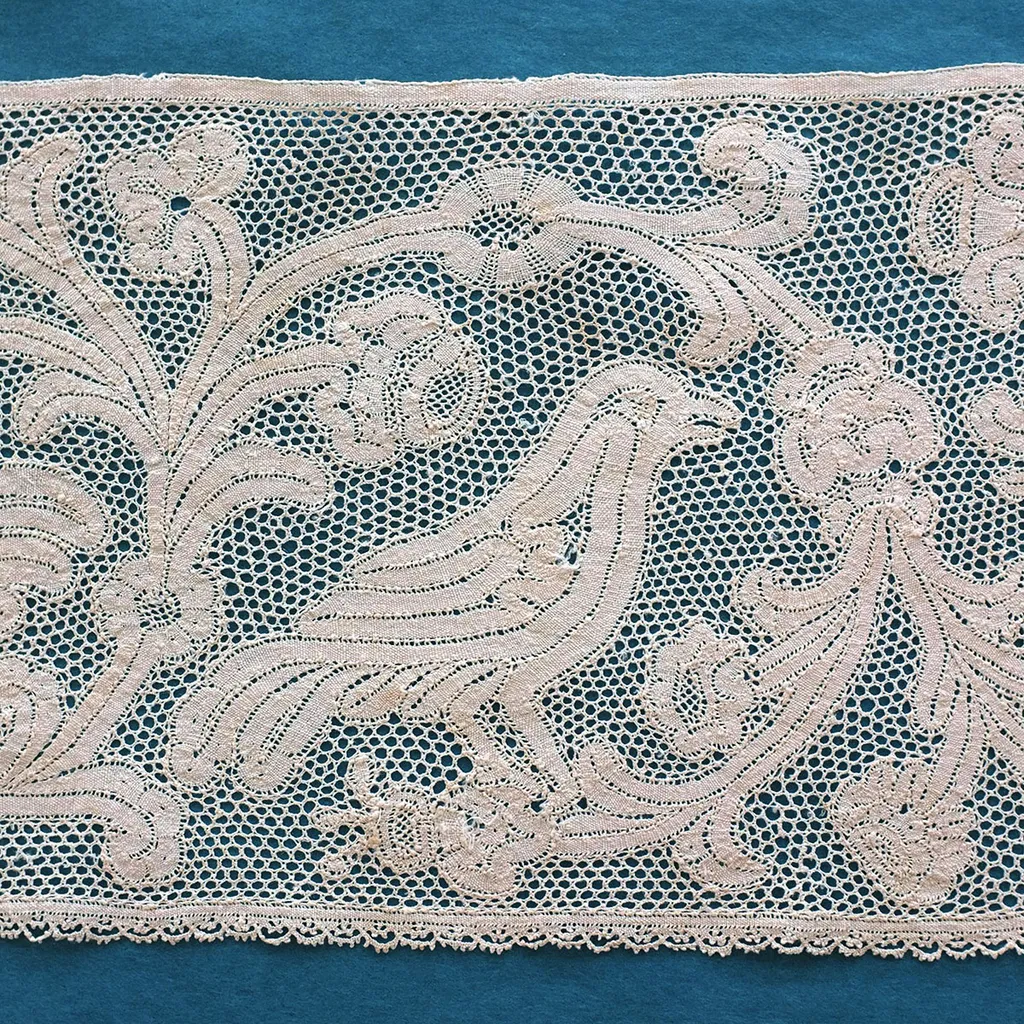
Through the 17th and 18th centuries, costly lace was the nobility’s essential fashion accessory and damn the expense. It is seen in glorious lace ruffs and collars, framing sitters’ heads in portraits of the time. The ease of moving lace trimmings from one garment to another has always been a recognised asset.
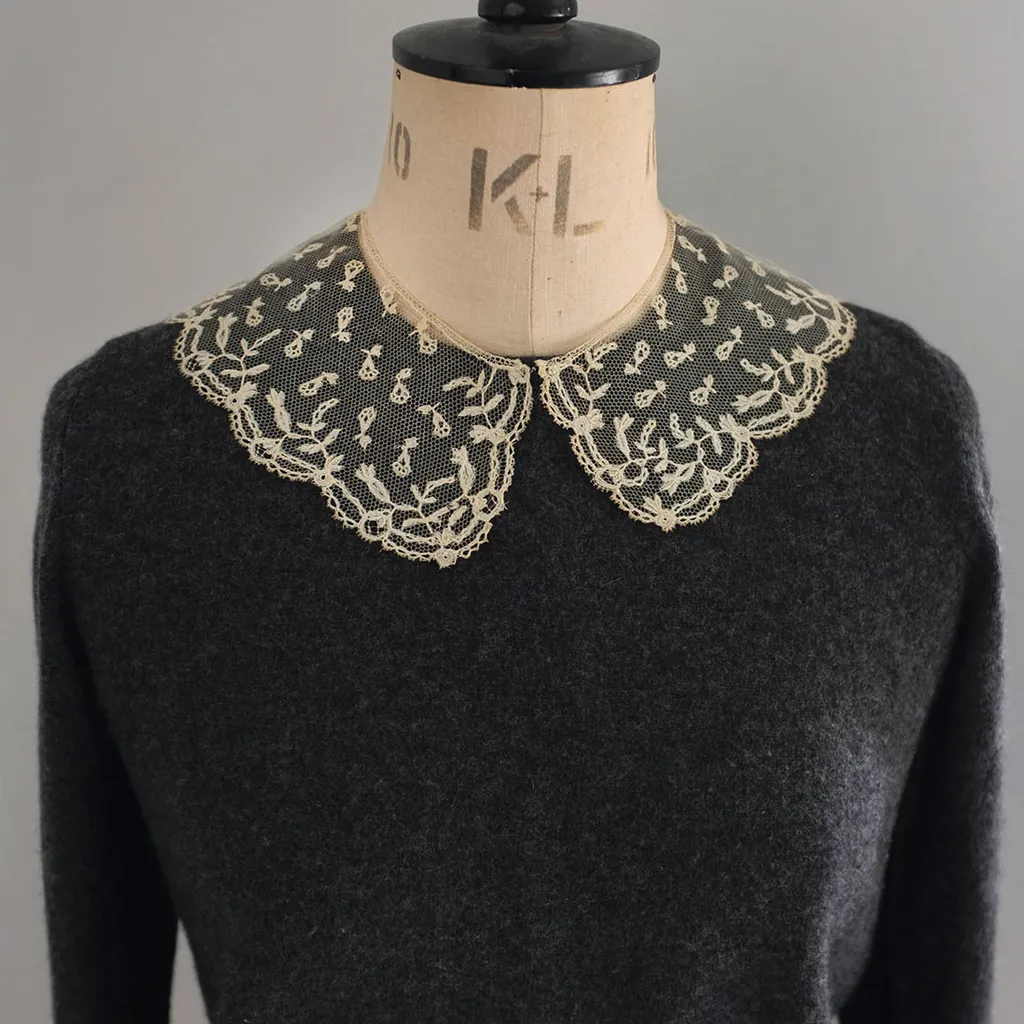
Two types of handmade lace emerged: needle lace, worked with one needle and a single fine thread, was used to stitch the outline or foundation threads onto a parchment pattern, and embroidered motifs were worked in from these foundations. Bobbin lace, also called pillow lace, was made with yarn wound onto bobbins – the yarn was woven around pins that held down paper, pricked with a pattern and attached to a pillow.
By the end of the 16th century, Honiton in Devon and areas of the East Midlands were established centres for bobbin lace in England. Many styles are named for the place they were first made: Honiton, of course, and also Brussels Point de Gaze needle lace, Point de Venise and Milan in Italy, and Alençon and Chantilly in France. ‘Brussels Point de Gaze is universally popular,’ says antique lace dealer Jenny Sargeant, but her own favourite is Honiton. ‘The best is as good as Brussels and, for me, has more charm. A Honiton lacemaker once told me it was inspired by Devon hedgerows.’
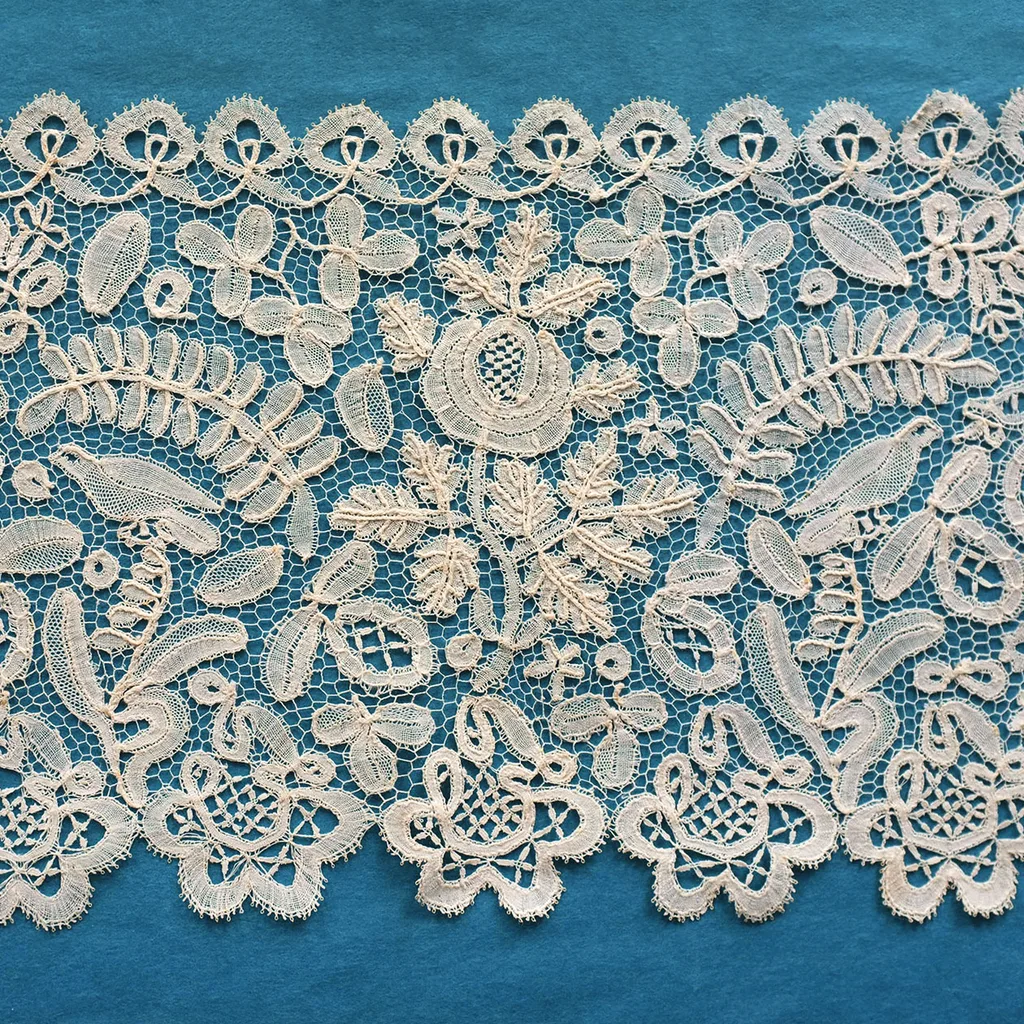
Lacemaking as an industry became a significant part of the economy of European countries, and many women were attracted to mastering its skills. It was worked in convents; lace schools were founded; and in England poor children were taught lacemaking so they might later be self-supporting. Even William Shakespeare was aware of bobbin lace, when in Twelfth Night he mentions ‘free maids that weave their thread with bones’.
A lacemaker would often create only a square inch of lace in a day and working conditions could be grim, especially for linen spinners working in damp basements with low light to prevent fine yarns drying out and breaking. Linen was the most used yarn; sometimes silk, also gold and silver thread and, after 1800, cotton.
In 1809, John Heathcoat near Nottingham patented a lacemaking machine and, suddenly, lace – the preserve of the rich – became affordable and its esteem went into decline. When Queen Victoria married Prince Albert in 1840, her wedding veil and dress trimming in Honiton lace were said to have taken 200 women three months to make. This created a limited revival in handmade lace, but by the First World War its part in international trade was over. Anne Swift’s interest in Queen Victoria’s support of Honiton lacemakers is reflected in one item she will never sell – a lace handkerchief believed to have come from the Queen’s wardrobe.
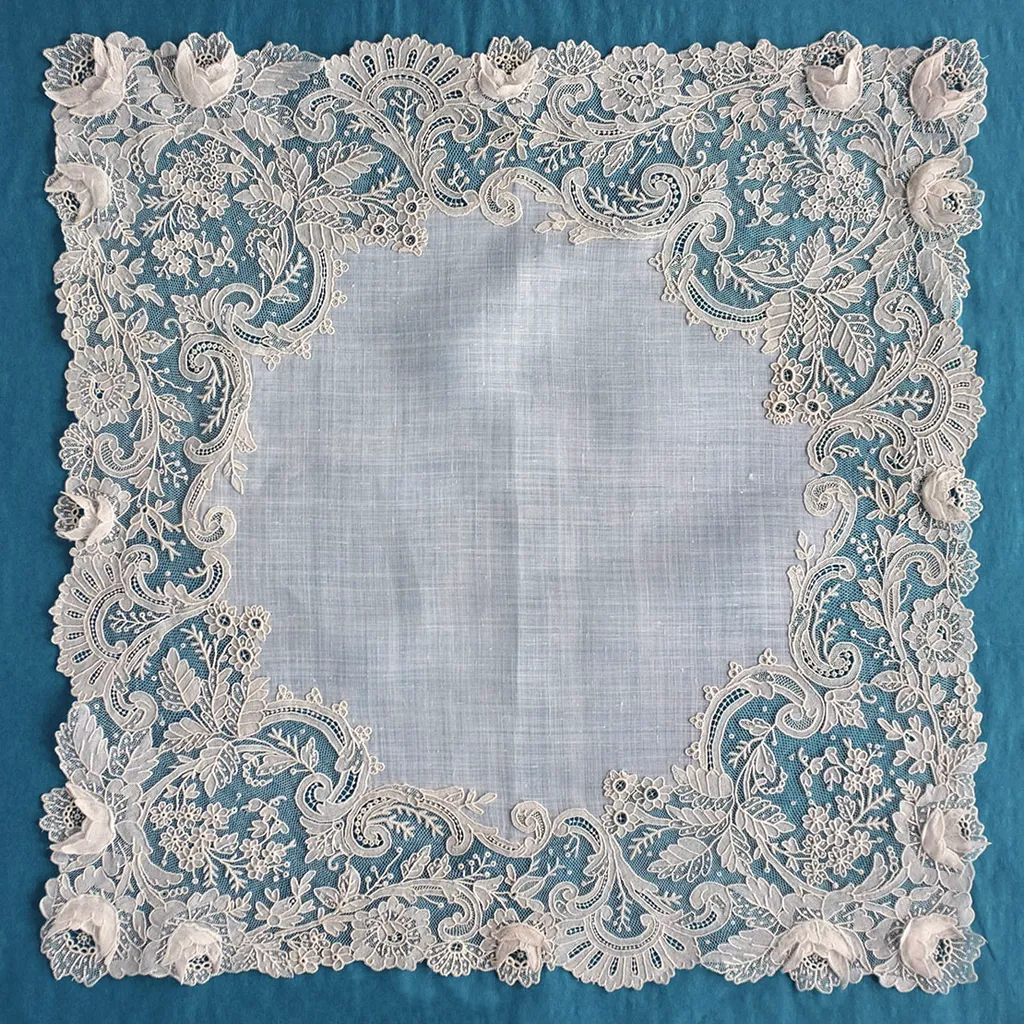
Antique lace is now far more affordable than it was in its great days and is bought by collectors, costume designers and fashionistas. Anne finds lace collars sell quickly: ‘Put on a plain dress, they make it unique.’ Jenny Sargeant has one customer who loves to frame pieces of early Venetian needle lace for his wall, while London dealer Diane Harby says antique lace fashion pieces and table linens are popular with visitors from Japan.
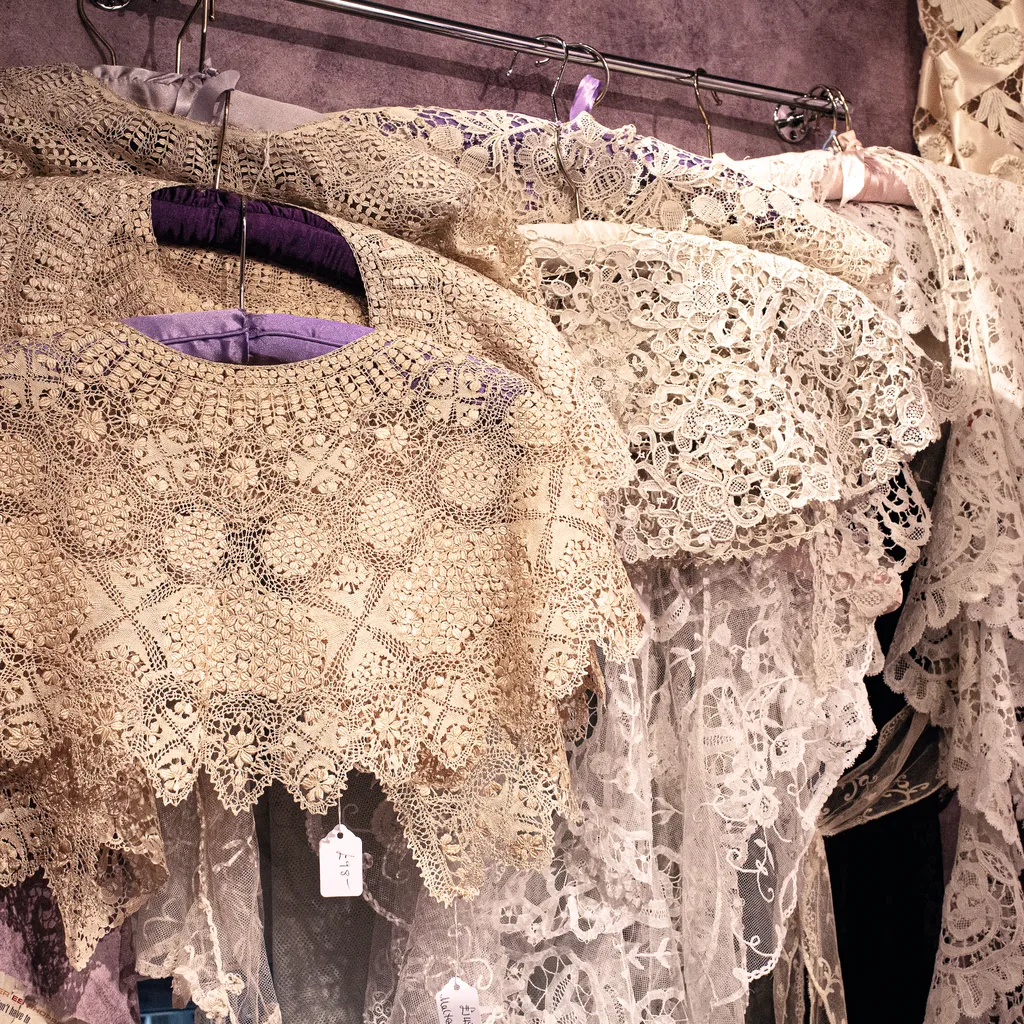
All agree that lace-edged handkerchiefs always find ready buyers. For Jenny Sargeant they offer an economic way to build a collection of different types of antique lace, and she welcomes brides wanting them for their weddings. For catching tears of joy on that special day, surely nothing can trump an antique lace handkerchief!